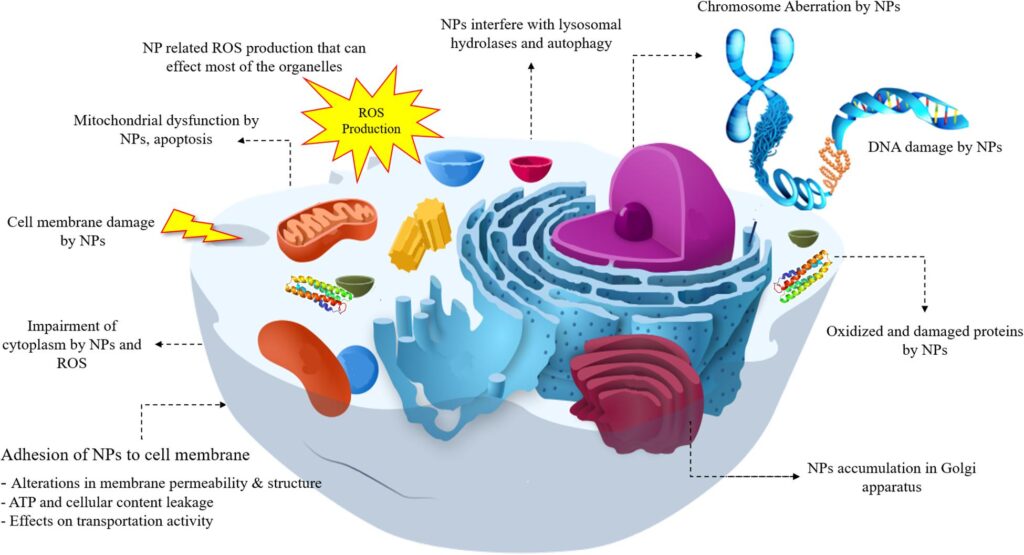All of us have probably come into contact with some form of metal at some point in our lives. Whether it’s a piece of jewelry, a tool you use every day, or something you just picked up at the store, metal is an integral part of our everyday lives. But what happens when the metal starts to accumulate in our bodies? In this blog post, we will explore the dangers of metal toxicity and how you can get rid of it for good. From heavy metals to environmental pollutants, read on to learn everything you need to know about getting rid of it.
What is Metal Toxicity?
It is a medical condition caused by excessive exposure to metals. It can occur from occupational, environmental, or accidental exposures. Symptoms can include nausea, vomiting, abdominal pain, diarrhea, and constipation. In severe cases, it can lead to coma, paralysis, and even death.
To get rid of metal toxicity you will need to treat the underlying cause of the metal exposure. If the exposure is occupational, you will need to seek professional help. If the exposure is environmental or accidental, you will need to remove the source of the exposure. Treatment typically includes restricting heavy metals intake, treating any accompanying symptoms with medication, and providing support to the patient throughout their recovery process.
How Does It Cause Disease?

It can cause a variety of diseases. It can occur when metal particles enter the body and damage cells. This can lead to a number of health problems, including cancer. It can also occur when metal is exposed to the environment. This can cause health problems if the exposure is chronic, high-dose, or accidental. It’s important to get rid of it if you’re concerned about your health.
Here are some ways to do that:
- take steps to reduce your exposure to metals whether from the environment or from your own body;
- seek professional help if you experience symptoms;
- eat a balanced diet that includes plenty of fruits and vegetables;
- get enough exercise;
- avoid taking medications that contain metals unless you’re sure they’re safe;
- keep track of your progress by keeping a record of what you eat, drink, and use on a daily basis; and
- talk with your doctor about how it could be affecting your health.
The Different Types
There are many different types, and each one requires a different approach to getting rid of it. Here are some of the most common types:
1. Acute toxicity
This is the most common type, and happens when you accidentally swallow or inhale metals. Symptoms can include nausea, vomiting, diarrhea, and fever. Treatment involves hospitalizing the patient and administering activated charcoal to try to remove the metals from their system.
2. Chronic toxicity
This occurs when you’re exposed to metals chronically (for example, through contact with water that has high levels of metals). Symptoms can include fatigue, joint pain, difficulty breathing, and cognitive issues. Treatment depends on the level of metal exposure and may involve removing it from your body or using supplements to help absorb it.
3. Environmental intoxication
This happens when you’re exposed to metals in your environment (for example, from contaminated soil). Symptoms can include skin irritation, impaired liver function, memory problems, and seizures. Treatment typically involves removing yourself from the environment or using protective clothing and equipment.
4. Foodborne toxicity
This happens when you eat food that has high levels of metals. Symptoms can include nausea, vomiting, diarrhea, and stomach pain. Treatment typically involves stopping the consumption of the food and taking antibiotics to prevent infection.
5. Ingestion of heavy metals by humans
This is a relatively rare type that happens when you swallow large amounts (for example, from coins or jewelry). Symptoms can include abdominal pain, vomiting, diarrhea, and seizures. Treatment typically involves removing it from the patient’s system using special techniques or using supplements to help absorb the metal.
6. Ingestion of heavy metals by pets
This is a relatively rare type that happens when your pet eats large amounts of metals (for example, from coins or jewelry). Symptoms can include vomiting, diarrhea, and seizures. Treatment typically involves removing the metal from the pet’s system using special techniques or using supplements to help absorb the metal.
How to Get Rid of it in Your Body

There are a few ways to get rid of metal toxicity in your body. The first is to remove the metal from the environment where it can accumulate. This can be done by sending metals to a hazardous waste disposal facility, using a special filter, or by choosing recycled products made with recycled materials.
The second way is to take supplements that contain minerals that bind with metals and remove them from the body. Some of these supplements are copper chelators, manganese chelators, and zinc chelators. These supplements must be taken on a regular basis for the best results.
The third way is to eat foods that are high in antioxidants. Anti-oxidants help fight against free radicals, which are harmful molecules that can damage cells and tissues. Foods that are high in antioxidants include fruits, vegetables, nuts, and seeds.
Conclusion
Metal toxicity can be a real problem for people who are exposed to it on a regular basis. Fortunately, there are some simple steps you can take to help reduce your exposure and minimize the effects. By following these steps, you can protect yourself from potential health problems and improve your overall wellbeing. Thanks for reading!

